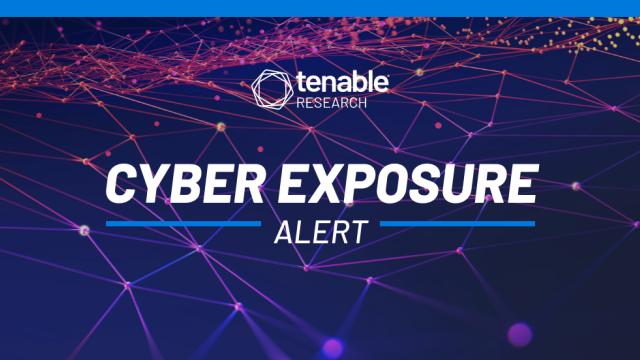- These are the Memorial Day headphones deals I recommend most to family and friends
- 4 gadgets I'm bringing to the beach this summer - and why they make such a big difference
- I'm a laptop expert and these are the Memorial Day laptop deals I'd scoop up ASAP
- These are my 13 favorite Memorial Day lawn and outdoor deals right now
- The most comfortable noise-canceling earbuds I've tested are on sale (and they're only $150)
South Korean and American Agencies Release Joint Advisory on North Korean Ransomware

Several South Korean and American agencies have released a joint cybersecurity advisory on North Korean state-sponsored ransomware operators.
Background
As part of their #StopRansomware campaign, the Federal Bureau of Investigations and Cybersecurity and Infrastructure Security Agency have released a joint Cybersecurity Advisory (CSA) in collaboration with South Korea’s National Intelligence Service and Defence Security Agency. The advisory focuses on North Korean state-sponsored threat actor activity and highlights some of their tactics, techniques and procedures (TTPs), indicators of compromise, and mitigations against these attacks.
This advisory supplements a CSA released in July 2022 which discusses the use of Maui ransomware by the threat actors against healthcare organizations. The use of Maui has been linked to Andariel (aka BeagleBoyz, Lazarus, APT38 and many other monikers), a North Korean threat actor. A week after that CSA was released, Microsoft attributed the use of H0lyGh0st ransomware to the same actor.
The threat group has been active since 2014 and have been implicated in several high profile heists such as the Bangladesh bank robbery in 2016, where the group stole $81 million dollars by hacking the SWIFT banking system, the WannaCry attacks in 2017, which severely impacted the United Kingdom’s National Health Service’s network, and the $540 million Axie Infinity hack in 2022. Three members of the group have been indicted in the US on charges relating to attacks where more than $1.3 billion has been stolen or extorted.
Tactics, Techniques and Procedures
According to the advisory, the threat actors acquire infrastructure such as domains, personas and accounts using ill-gotten cryptocurrency. The actors use third-party entities to receive ransom payment, in attempts to mask their identity. The threat actors use virtual private networks/servers and IP addresses in countries outside of North Korea to further obfuscate their identities.
Gaining Initial Access
Recently, the threat group has been observed exploiting CVE-2022-24990,CVE-2021-44228 (Log4Shell) and CVE-2021-20038 to gain access to target environments.
CVE-2022-24990 is an information disclosure vulnerability in Terramaster NAS systems that allows unauthenticated remote attackers to discover administrative passwords. It was patched in February 2023.
CVE-2021-44228 is Log4Shell, the infamous RCE in log4j disclosed in December 2021. As of October 1 2022, 72% of organizations remained vulnerable to Log4Shell.
CVE-2021 20038 is a critical buffer overflow vulnerability in SonicWall appliance firmware that was patched in December 2021.
The actors have also used trojan versions of X-Popup, a messenger application used in several smaller hospitals in South Korea and have spread malware using 2 malicious domains, xpopup.pe[.]kr and xpopup[.]com.
Recon and Lateral Movement
After gaining initial access, the actors perform reconnaissance using customized malware, execute commands and upload and download files. They then exfiltrate the target’s data to a remote attacker-controlled system. Although not mentioned in the advisory, the group has used Active Directory in its discovery and credential harvesting activities in espionage related breaches.
Encrypting target files and Ransom Demand
The use of Maui and H0lyGh0st ransomwares has been attributed to these threat actors, however the group has been known to use legitimate encryption applications, such as BitLocker, and encryptors from other ransomware operators such as LockBit and GonnaCry. The actors have been known to impersonate other groups. The actors typically ask for ransom demands to be paid in Bitcoin. Communication with victims is performed via ProtonMail email accounts, presumably for the added privacy provided by service’s end-to-end encryption. The actors have been observed targeting healthcare companies and have often threatened these companies with providing their proprietary data to direct competitors if the ransom is not paid.
Identifying affected systems
As we examine the TTPs used by these threat actors, it’s important to note that malicious actors continue to change their tactics and leverage various known and exploitable vulnerabilities, as well as misconfigurations. A recent campaign by the Lazarus group, another threat actor group suspected of being a North Korean state sponsored actor, has been observed exploiting Zimbra Collaboration Suite (CVE-2022-27925 and CVE-2022-37042), and are using different tools, such as RDP or new versions of malware for information stealing and maintaining persistence. This constant evolving of actor’s operations requires a holistic approach to exposure management to combat it.
The Tenable One Exposure Management Platform extends beyond traditional vulnerability management, which concentrates on the discovery and remediation of publicly disclosed Common Vulnerabilities and Exposures (CVEs). A foundational part of any exposure management program, Tenable One includes data about configuration issues, vulnerabilities and attack paths across a spectrum of assets and technologies — including identity solutions (e.g., Active Directory); cloud configurations and deployments; and web applications.
As we review the list of mitigations discussed in the advisory, our Active Directory Security solution can help organizations review Indicators of Exposure relating to the: use of weak password policies, running of end-of-life operating systems, auditing of privileged accounts and use of weak encryption algorithms in Active Directory’s PKI. We highly recommend reviewing your AD environment to focus on misconfigurations that may put your organization at risk.
Additionally, Tenable has plugin coverage for the CVEs discussed in this blog. A dynamic and filtered list can be found here.
Get more information
Join Tenable’s Security Response Team on the Tenable Community.
Learn more about Tenable One, the Exposure Management Platform for the modern attack surface.

